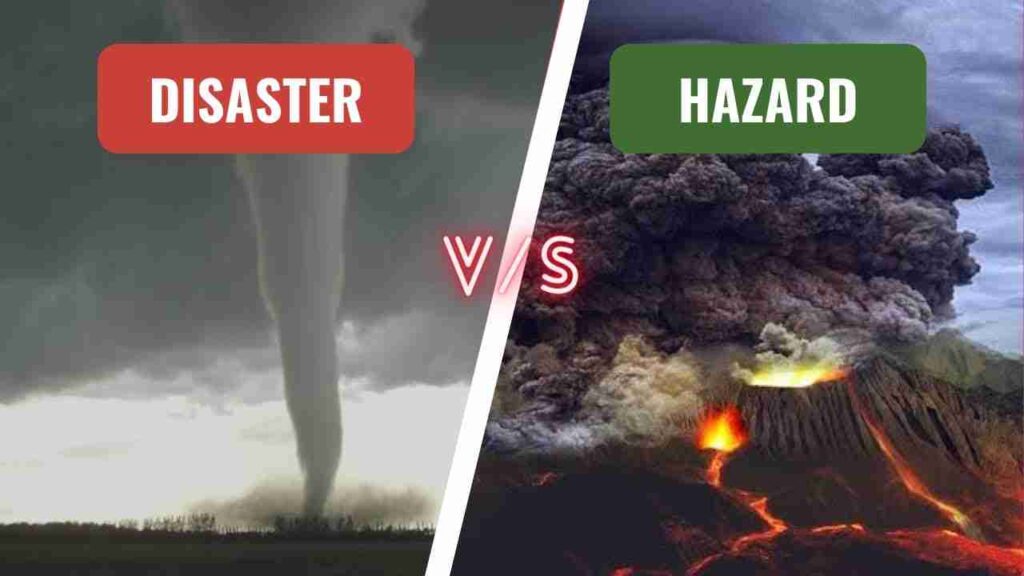
Learn about 10 Difference between Hazard and Disaster
Discovering the 10 Difference between hazard and disaster is the focus of this article. Though often used synonymously, they hold distinct definitions. Let’s explore their differences to gain a clearer comprehension of their impact on our lives.
10 Difference between hazard and disaster
Nature of Occurrence: Hazards are events or situations that can cause harm or damage, while disasters are the actual outcomes of hazards when they become harmful events.
Severity and Scale: Hazards can range from minor incidents to significant threats, while disasters involve widespread damage and loss on a larger scale.
Timing and Predictability: Hazards can often be predicted to some extent, allowing for mitigation measures, while disasters are unexpected and catch communities off guard.
Duration and Persistence: Hazards can last for short or extended periods, while disasters tend to have a rapid onset and immediate consequences.
Also Read: Discover Ten Key Difference between Calcination and Roasting
Impact on Human Life: Hazards may pose risks to human health and safety, but may not necessarily result in casualties, while disasters often lead to loss of life, injuries, and harm to human well-being.
Magnitude of Economic Losses: Hazards can cause economic losses, but may not necessarily result in widespread or long-term economic impacts, while disasters often result in significant economic losses, disruption of livelihoods, and long-term repercussions.
Dependency on Human Intervention: Hazards may require human intervention for mitigation, while disasters often require significant human intervention for response, relief, and recovery efforts.
Also Read: Learn 6 Difference between combinational and sequential circuit
Scope of Emergency Response: Hazards may require localized emergency response measures, while disasters often demand coordinated and comprehensive emergency response efforts at regional, national, or international levels.
Scope of Rehabilitation and Recovery: Hazards may require limited rehabilitation and recovery efforts, while disasters often require extensive and long-term rehabilitation and recovery efforts to rebuild communities and restore essential services.
Societal Impacts: Hazards may affect specific communities or regions, while disasters have broader societal impacts that can disrupt social structures, cultural norms, and community cohesion.
Also Read: Discover Ten Key Difference between Bailment and Pledge
In summary, hazards and disasters have distinct differences in terms of their nature, severity, timing, predictability, impacts, and response requirements. Understanding these differences is crucial for effective risk management, emergency preparedness, and response planning to ensure the safety and resilience of communities and the environment.
Watch the video: